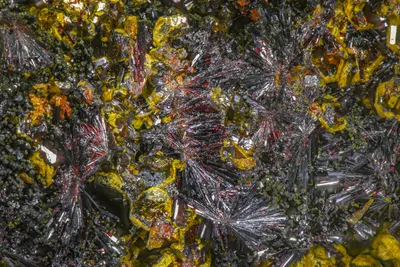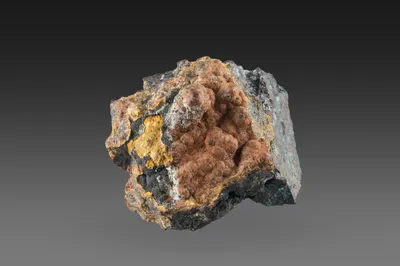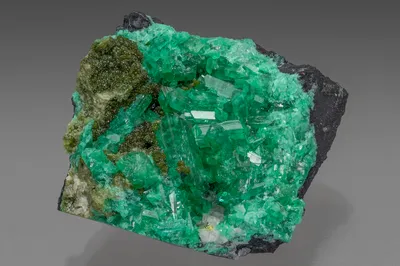Mineral Species
Philipsbornite
Type Locality
No
Composition
PbAl3(AsO3.5(OH)0.5)2(OH)6
Crystal System
Trigonal
Status at Tsumeb
Confirmed
Abundance
Very rare
Distribution
First (?) and second oxidation zones
Paragenesis
Supergene
Entry Number
Species; TSNB274
General Notes
Philipsbornite is the arsenate (or sulphate-free) analogue of hidalgoite, which contains both arsenate and sulphate anion groups (Back 2022).
Philipsbornite from Tsumeb was described by Schmetzer et al. (1982) at which time Tsumeb was only the second locality at which philipsbornite was known to occur. At Tsumeb, philipsbornite was found as colourless pseudo-cubic and pseudo-octahedral crystals (to 100 µm) on massive quartz accompanied by azurite, bayldonite, hematite, malachite and tsumcorite. A portion of the specimen studied by Schmetzer et al. (1982) is conserved in the Feinglos Collection at Harvard University (MGMH 2022.4.3060T).
Mills and Birch (2007) described a specimen in the collections of Museum Victoria in Melbourne, Australia (catalogue number M37061). The specimen features azurite crystals (to 20 mm) on massive quartz which is partly coated by a crust of red-brown carminite and powdery yellow gartrellite, with tabular microcrystals of bayldonite (to 100 µm). Clusters of blocky yellow crystals of philipsbornite (to 60 µm) are scattered on the gartrellite crust. The philipsbornite crystals also form penetrating rhombohedral twins (to 100 µm).
A specimen in the Pinch Collection (MGMH 2020.7.771) comprises pearly, scale-like crystals of philipsbornite associated with betpakdalite (almost certainly betpakdalite-CaCa) in a slightly vuggy sulphide matrix. The specimen was originally in the collection of John Innes who recovered it from 32 Level, West 40 in the second oxidation zone.
Associated Minerals
azurite; bayldonite; betpakdalite-CaCa; carminite; cobalttsumcorite (?); gartrellite; hematite; köttigite; malachite; quartz; tsumcorite; tsumebite; zincolivenite




